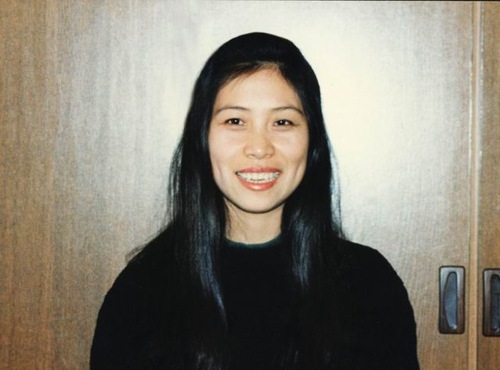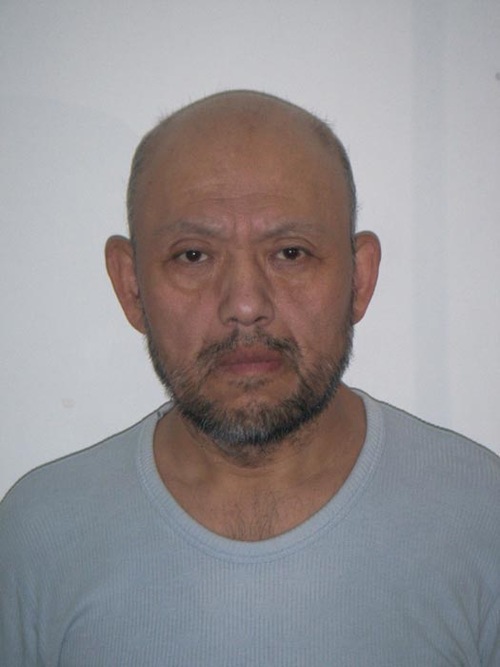(Minghui.org) Chinese officials publicly announced their decision to abolish the notorious forced labor camp system on January 7, 2013, according to a December 2013 Amnesty International report. The "education through labor" system, as authorities call it, has existed for nearly six decades. The name is deceiving however, as these are forced labor camps, pure and simple, with brainwashing and torture commonplace in addition to overwork and dangerous working conditions.
The forced labor camp system in China is declared to have been “shutdown,” but the harm and pain it has caused to millions of people, especially Falun Gong practitioners, has long-lasting effects.
The accountability of crimes committed in labor camps shall not go away with the “close.” The question as to whether the victims are facing new types of mistreatment remains to be answered.
While guards and labor camp staff are responsible for carrying out wrongdoings, those who gave the orders and issued policies are also liable, if not more so, for the atrocity.
Deaths of Practitioners Due to Torture in Labor Camps
In a recent summary report published by Minghui, at least 3,653 practitioners died during detention as of December 2013. Among them, 714 were detained at various labor camps as their last detention location before death. At least 127 labor camps were found to have been involved and below is a table containing the top 10 regarding the number of related death cases.
The brutality at many labor camps remains unreported, partly because of the information blockade and threats from officials, and partly because victims were unwilling or unable to recall the horror. But from the cases obtained from various sources, one catches a glimpse of the severe torture.
Ms. Gao Rongrong, an accountant at the Luxun Fine Arts College in Shenyang City, Liaoning Province, was arrested to Longshan Labor Camp in July 2003 because of her belief in Falun Gong. Guards shocked her with electric batons for six consecutive hours one day in April 2004. Blisters, blood, and pus covered her face. Mr. Gao's beautiful face was disfigured. She was only 36.
 Falun Gong practitioner Ms. Gao Rongrong, an accountant at the Luxun Fine Arts College in Shenyang City
Falun Gong practitioner Ms. Gao Rongrong, an accountant at the Luxun Fine Arts College in Shenyang City
 On May 7, 2004, Gao Rongrong's face is covered with burns from electric baton shocks. These pictures were taken ten days after the torture.
On May 7, 2004, Gao Rongrong's face is covered with burns from electric baton shocks. These pictures were taken ten days after the torture.
Ms. Gao urinated blood and had difficulty eating since August 2004. She was on the verge of death. Shenyang Judicial Bureau, the supervising body of Longshan Labor Camp, refused to release her despite repeated warnings about her condition from the doctor.
Falun Gong practitioners successfully rescued her in October 2004. However, police and local officials soon found her and detained her at the Masanjia Labor Camp in March 2005. The Masanjia Labor Camp sent her to a hospital on June 6, 2005. She died on June 16, 2005 at the age of 37. According to the hospital, she was in critical condition upon arrival.
Injuries Still Remain
Mr. Gao Ke, an elementary school teacher in Harbin, Heilongjiang Province, was detained 13 times for practicing Falun Gong, 5 of them were in labor camps. After hearing of the recent abolition of the labor camp system, he said, “Although the labor camps may no longer be functioning, the physical and extreme psychological harm they have caused me still remains.”
 Mr. Gao Ke, an elementary school teacher in Harbin, Heilongjiang Province
Mr. Gao Ke, an elementary school teacher in Harbin, Heilongjiang Province
Independent reports also confirm the existence of torture and its severity in the forced labor camps. In April 2013, Lens Magazine in China published a 14-page article exposing abuses at Masanjia Labor Camp. The 20,000-word investigative story was based on interviews with approximately 20 former inmates. They suffered from forced labor and numerous types of torture including the Tiger Bench, Death Bed, racking, and solitary confinement.
 Methods of torture in “black jails:” tiger bench, violent beatings, death bed (Stretching bed, also called five horses splitting the body), electric shock, hanging by handcuffs, force-feeding, iron chair, injection with unknown drugs
Methods of torture in “black jails:” tiger bench, violent beatings, death bed (Stretching bed, also called five horses splitting the body), electric shock, hanging by handcuffs, force-feeding, iron chair, injection with unknown drugs
“Shutdown” of Labor Camps Does Not Mean the End of Persecution
Labor camps do not work on their own. They are supervised by judicial bureau and follow the orders of 610 Office as well as Political and Legal Affairs Committee. Discontinuation of the forced labor camps can be considered progress only if the perpetrators are held accountable, and the system is not replaced by other types of torture or mistreatment.
Unfortunately, there is little evidence of such progress.
Amnesty International released a new report regarding China's forced labor system on December 17. The report calls the shutdown of labor camp system “a cosmetic change” and concludes that “it's clear that the underlying policies of punishing people for their political activities or religious beliefs haven't changed. The abuses and torture are continuing, just in a different way.”
The labor camp system is rooted in a network that implements human rights violations. As long as the underlying soil remain, its withering could easily be superseded by others types of mistreatment that continues to deprive Chinese people of the freedom of belief—as in the case of Falun Gong.
History of the Labor Camp System
The Chinese forced labor system started in 1957, following the gulags in the Soviet Union. To suppress different opinions, especially those from intellectuals with independent thoughts, Chinese communist dictator Mao first encouraged them to speak freely. As the overt plot gradually unfolded, 550,000 people were then classified as “rightists” and then sent to farms or other similar places in rural areas. What followed was forced labor as well as brainwashing.
A large percentage of these victims suffered from this political campaign for up to a decade, until the end of the Culture Revolution. Intimated by this assault and numerous other political campaigns, many people lost their independent thinking and became submissive to the tyrannical system.
Although officially referred as “re-education through labor,” the name is rather misleading. The primary purpose is brainwashing and the main component is forced labor, so forced labor camps is a more accurate term to describe it. A reference for the Soviet labor camp system can be found in the Gulag Archipelago, a three-volume book based on eyewitness testimony and primary research material.
Although the system was dissolved in the Soviet Union along with collapse of communism, it remained in China. Despite its relative long detention time—often in years, this system does not require court trial or other judicial procedures as that of the prison system. It was thus often used by officials to arbitrarily punish their targets and intimidate whoever may be considering similar paths.
When the communist officials decided to ban Falun Gong in July 1999, they quickly found out that the labor camp system was an ideal tool to detain practitioners for lengthy periods of time, aside from prisons and brainwashing centers. The United States Commission on International Religious Freedom (USCIRF) states in its 2008 annual report that more than one half of these labor camp detainees were Falun Gong practitioners. Overall, there were at least 351 labor camps as of late 2012, according to data released from the Ministry of Justice in China.
Labor camps were often expanded or added depending on the need to hold more detainees. For example, after the persecution started, practitioners detained at various labor camps in Guangxi Province were all sent to Guangxi First Labor Camp in Nanning City. As the number of practitioners increased, a separate labor camp, Guangxi Women's Labor Camp, was launched on January 1, 2001, to solely detain women practitioners. This new labor camp then moved to a new, better-equipped location to allow guards to torture practitioners more secretly.
The December 2013 Amnesty International report has identified that many labor camps have simply changed their name when they are declared “shut down.” In many cases, they are renamed “drug rehabilitation centers” and continue to serve as facilities for arbitrary detention and torture.
Chinese authorities are also increasingly making use of so-called “black jails,” drug rehabilitation centers, and “legal education centers” (a euphemism for “brainwashing centers”) to take the place of “reform through labor” camps.
The forced labor camp system hasn't been operating in a vacuum. It was only one of the many tools of the persecution of Falun Gong. The accountability of the perpetrators who have committed crimes in labor camps does not simply go away with the declared “shutdown.” The “shutdown” of labor camps can by no means erase what has happened there.
Related articles (Chinese language):
http://www.minghui.org/mh/articles/2013/12/22/决不能因废除劳教放过累累罪恶-284325.html






